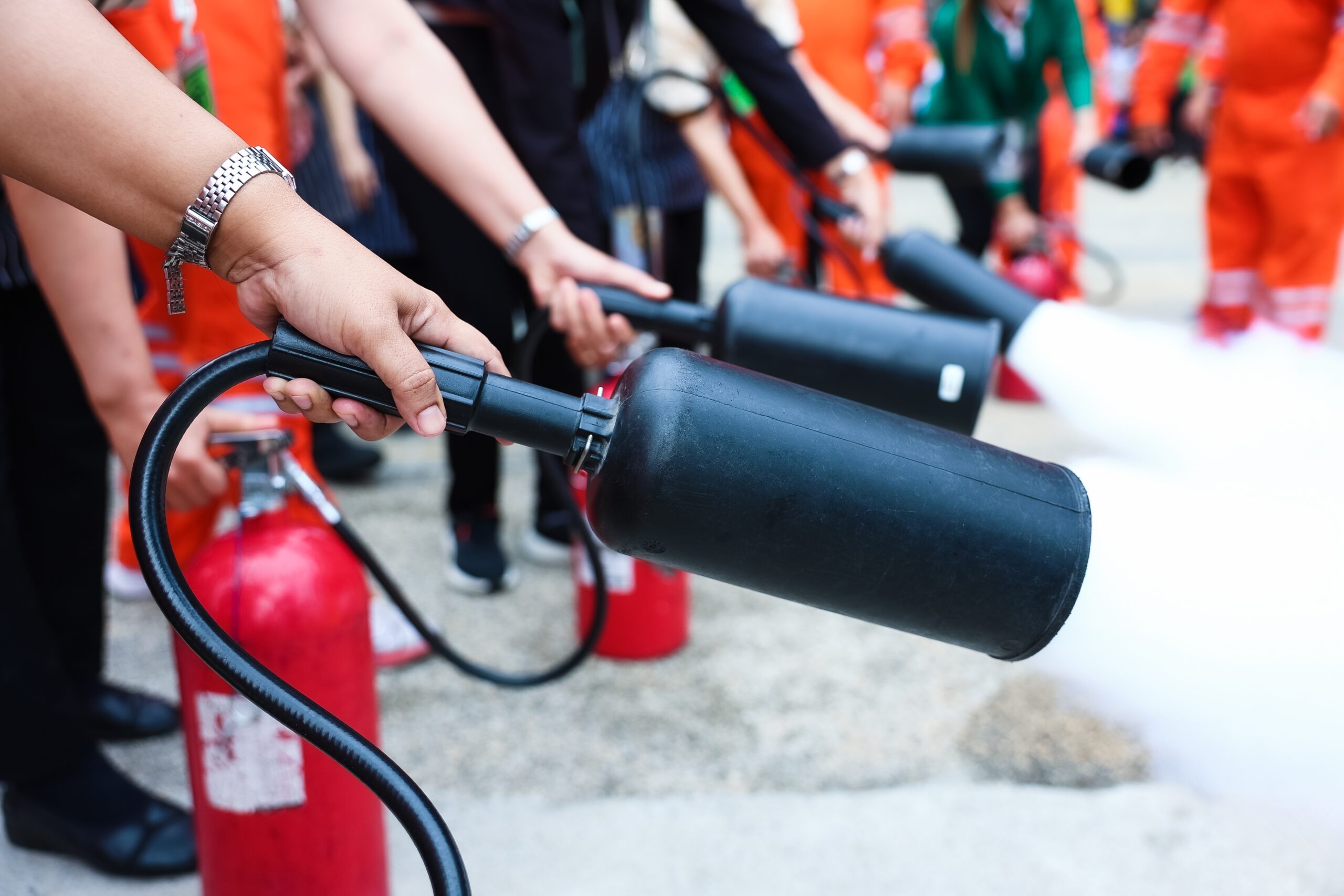Many cutting-edge technologies are conceived in academic laboratories where hazardous chemicals and safety risks can be prevalent. As such, health and safety protocols are just as important in educational institutions as they are in industries. Recent accidents within academic institutions have raised concerns about how safety is conducted by lab personnel. This article will enumerate some common health and safety red flags in academic labs while providing recommendations to counter these shortcomings.
1. Infrequent lab safety training and a lack of standard protocols.
Standardized protocol and comprehensive, engaging training are the backbones of lab safety. Before starting experiments, students conducting their research must have a firm understanding of the safety hazards that accompany this work. They can then know the best methods for performing necessary tasks in a way that minimizes exposure to hazards and safety risks. If a training program is not in place and active, that is a major safety red flag.
Everyone in a laboratory (whether undergrads, graduate students, postdocs, and even the principal investigator) should regularly attend laboratory safety training conducted by safety experts. At the minimum, a safety training program must be able to discuss the safety hazards and risks, standard protocols for minimizing risks, and how to act in if an incident occurs. The program must also be relevant to the types of laboratories and laboratory work that exist at the academic institution. For instance, a school may have a mix of biological labs, chemical labs, and instrumentation and analysis facilities. For such an institution, the safety program would be more efficient if split into modules that focus on safety issues specific to each lab type. Lastly, safety training must be regularly conducted to update safety practices, orient newcomers, refresh returning personnel, and ingrain a culture of safety in the school.
2. An absence of safety leadership in laboratories.
Instilling safety leadership across all levels of an academic institution encourages greater retention of laboratory safety protocols. A lack of leadership is a critical safety red flag, as without accountability, students may be disinclined to apply safety rules, even after attending safety training. A study involving more than 900 lab personnel from academic laboratories in the US concluded that the active participation of laboratory leadership in safety is positively correlated with a significantly lower number of accidents. The study noted that regularly having laboratory safety practices monitored and reviewed by either the PI or laboratory supervisor motivated compliance with safety protocols. Additionally, the intentional delegation of safety-related tasks to various lab personnel can encourage participation in safety initiatives by creating a sense of shared ownership over the safety of the laboratory.
3. Irregularly conducted safety inspections.
Inspections track performance, ultimately securing the health and safety of the personnel that conducts them. By identifying unsafe practices and potentially hazardous work areas, inspectors provide details that help create a safer environment. Many organizations deal with similar hazards, so safety practices are often built from shared knowledge. Therefore, referring to the following list of common factors on lab inspection checklists can help in formulating a comprehensive inspection:
- Personal protective equipment (PPE)- Is there sufficient PPE available to all lab personnel?
- Chemical storage– Are chemicals stored according to compatibility and hazard class?
- Chemical waste handling– Is chemical waste stored according to hazard class?
- Chemical hoods and ventilation– Are the fume hoods being used as a storage area for chemicals, equipment, etc.?
- Signage and labels- Are all containers properly labeled?
- Emergency kits– Are the first-aid kits fully stocked and accessible?
- Emergency safety equipment– Are the emergency shower and eyewash stations working and free from obstructions?
- Lab housekeeping– Are the benchtops and sinks clean and free from unwashed glassware?
- Compressed gas cylinder storage– Are the compressed gas cylinders upright and properly secured?
- Safety documents– Is the location of the chemical safety plan accessible and known to all lab personnel?
Once an inspection that will cover all the necessary concerns of the specific laboratory has been formulated and assigned to responsible personnel, it is equally important to conduct it at regular intervals. This way, no essential equipment, protocols, or persons are threatened by neglect.
4. Out-of-date or incomplete chemical inventories.
A laboratory’s chemical inventory considerably shapes its risk landscape, as reagents vary in toxicity and hazard class. Therefore, having inaccurate information, especially in the face of an emergency, is another big safety red flag. Maintaining a regularly updated chemical inventory provides laboratory personnel with crucial information about the hazards they could be exposed to at any time. Inventorying also keeps personnel on top of disposing of chemicals when they are past their expiration date, in an apparent state of deterioration, or without legible labels. Unidentifiable chemicals lead to increased safety risks as proper handling, storage, and disposal are not possible without accurate identification.
Laboratory members in academic institutions use a variety of hazardous substances and perform risky experiments to conduct their research. As such, they are exposed to many safety hazards, some of which could result in a major accident. Correcting common safety red flags in academic laboratories, such as inadequate training and lab inspections, outdated chemical inventories, and lack of safety leadership is a critical part of maintaining a safe work environment. By fostering a safety culture at all levels of academic institutions, those at the frontlines of research readily integrate safety into their workflows, leading to better outcomes for all.
Author Bio
The SafetyStratus Research Advisory Group (RAG) brings together thought leaders from the global environmental, health, and safety community to promote best practices and provide key insights in the profession and the industries they serve. The Research Advisory Group also advocates, where practical, the intersection of and advances with the use of technology, such as the SafetyStratus enterprise EHS software platform. Group membership consists of representatives from across varied disciplines and market sectors as well as select members of the SafetyStratus team.
The primary objectives of the SafetyStratus RAG partnership are to:
- Build a strategic partnership between EHS practitioners and the SafetyStratus team.
- Provide engaging and practical content to the global EHS community.
- Provide discipline and market feedback specific to SafetyStratus products and services.
While the objectives of the RAG are varied, the primary public-facing outcome will be available through engaging and practical content found on the SafetyStratus resource pages. Various articles, papers, and other valuable resources will be produced and shared as part of an ongoing effort to cultivate a robust community. Ultimately, the SafetyStratus RAG will expand to have a broader reach and provide opportunities for more inclusion by all interested EHS professionals a collaborative community environment.
Resources
American Chemical Society Joint Board–Council Committee on Chemical Safety. (2017). Safety in Academic Chemistry Laboratories (8th Edition). American Chemical Society. https://www.acs.org/content/dam/acsorg/about/governance/committees/chemicalsafety/publications/safety-in-academic-chemistry-laboratories-students.pdf.
Cross, S. (2020, October 15). Shelf Lives of Common Chemical Reagents. OnePointe Solutions. https://www.onepointesolutions.com/blog/chemical-shelf-life/
Ellis, O., Gibson, J.H., Huang, D.Y.Q., Schröder, I., & Wayne, N.L. (2016, January 1). Laboratory safety attitudes and practices: A comparison of academic, government, and industry researchers. Journal of Chemical Health & Safety, 23, 2, 12-23. Retrieved from ACS Publications. https://pubs.acs.org/doi/10.1016/j.jchas.2015.03.001
Hvistendahl, M. (2022, November 1). BENT OVER IN PAIN: Student Infected With Debilitating Virus in Undisclosed Biolab Accident. The Intercept. https://theintercept.com/2022/11/01/biosafety-lab-accident-chikungunya-virus/
Occupational Safety and Health Administration U.S. Department of Labor. (2011). Laboratory Safety Guidance. https://www.osha.gov/sites/default/files/publications/OSHA3404laboratory-safety-guidance.pdf
The Trustees of Princeton University. (2023). Peroxide Forming Chemicals. Princeton University Environmental Health and Safety. https://ehs.princeton.edu/laboratory-research/chemical-safety/reactive-materials/peroxide-forming-chemicals



